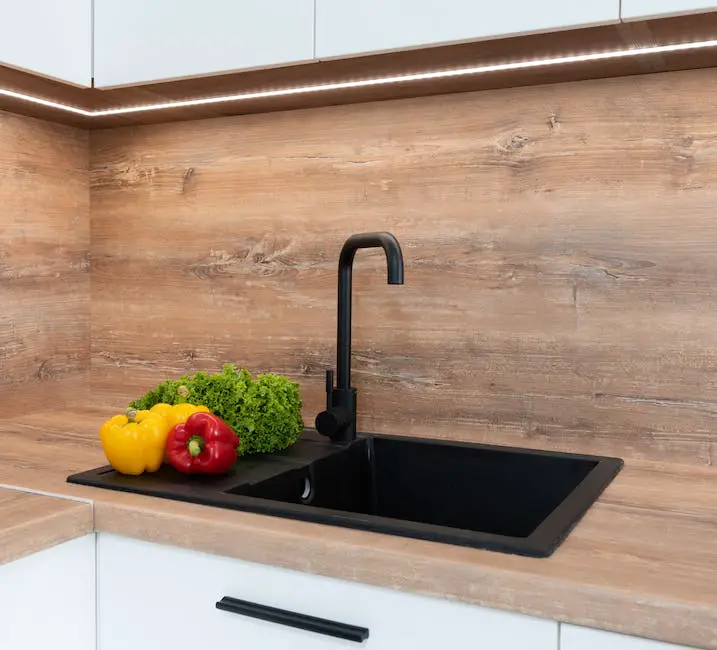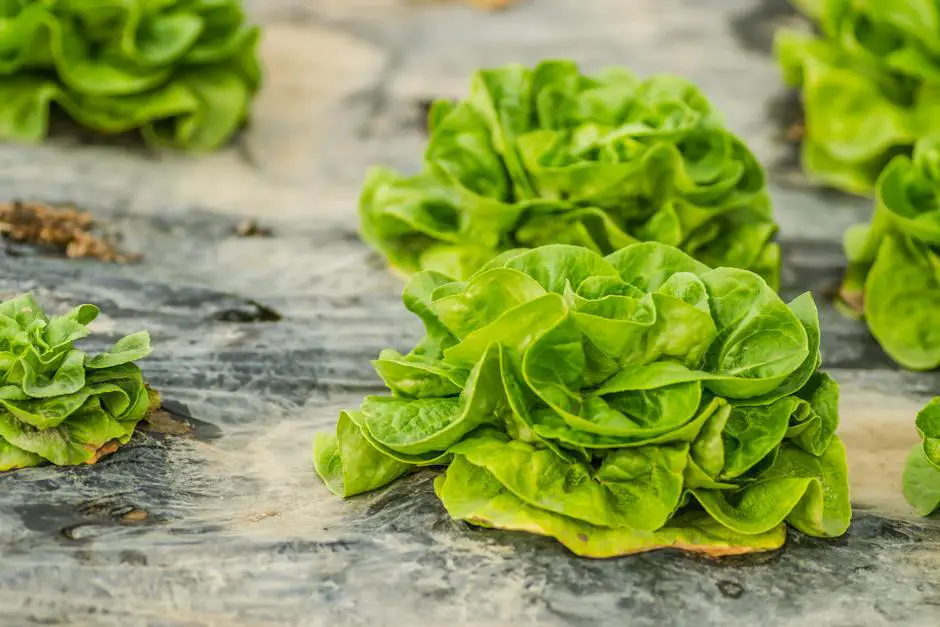One of the most satisfying experiences for a gardener or a farming enthusiast comes with harvesting their own produce, and lettuce is no exception. This ubiquitous salad green, known for its versatility and nutritional value, warrants particular attention during the harvesting phase to ensure its freshness, quality, and flavor. Grasping how to discern the right time for harvest and mastering the technique can translate into the most rewarding yield. In addition, optimizing post-harvest care also plays a fundamental role in prolonging the produce’s freshness and enhancing its overall utility. This essay will serve as your guide, shedding light on every aspect of lettuce harvesting- from understanding the maturity signs to cutting techniques and post-harvest care practices.
Knowing When to Harvest Lettuce
The Great Green Hunt: Searching for the Perfect Harvest Time for Lettuce
Are you an ardent gardener who takes pride in a well-tended backyard garden? Are you thrilled at the sight of a handful of fresh, vibrant lettuce picked from your very own patch? If the answer’s yes, then you know the exhilaration in successfully growing and harvesting your own greens. The truth is: there’s perfect timing for everything, and for lettuce, that time is not a moment too soon or too late.
Reader Poll: What online courses would interest you?
Understanding Lettuce and its Life Cycle
Lettuce, despite being an everyday vegetable, has a life cycle that, when understood, makes timing the harvest far simpler. The two main stages in a lettuce’s life, vegetative and bolting, play significant roles in the quality of the harvest. The former is our goldmine stage where lettuce grows lush leaves, while the latter signals the time when lettuce starts to flower and produce seeds. What we’re keen to avoid is the bolting stage because once lettuce enters this phase, the leaves often turn bitter and tough.
Signs to Look Out for
A common rule of thumb: size matters not – it’s all about the leaves’ fullness and color. If your lettuce has grown enough to produce a meal, it’s usually ready to harvest. Baby leaf varieties are typically ready in 25-30 days, while head lettuces like romaine can take 60-70 days. The leaves should be vivid with a clean, fresh appearance. If the core of the lettuce is elongating, it’s often a sign it’s reaching its bolting phase.
Feel it Right
The right touch can be a valuable tool in assessing the perfect harvest time. Leaves should feel firm, but not hard. When pressed gently, they should bounce back. If they wilt under your touch, consider giving them a few more days to mature.
Subscribe to our newsletter!
Day Timing Matters As Well
An interesting fact: lettuce harvested in the morning, right after the dew has evaporated, often has a crisper taste. That’s when the plant’s sugar content is at its highest, leading to a fresher, sweeter taste.
A Final Tip: Rotate Your Harvest
Instead of harvesting entire plants at once, consider picking older, outer leaves and allow the center ones to keep growing. This rotational technique can give you a sustained harvest from the same plant over several weeks.
In summary: Don’t wait for a specific size or date to harvest your lettuce. Monitor its color, texture, and growth stage, and remember – the early bird definitely gets the best of the greens. Happy gardening and harvesting – may your salads be ever fresh and crisp!

Effective Lettuce Harvesting Techniques
The Art of Harvesting Lettuce: Tips, Tricks & Techniques
Embarking on the journey of growing lettuce is an exciting venture, but the ultimate satisfaction comes when it’s time to harvest your leafy green treats. Having already delved into understanding the life cycle of lettuce and how to determine its readiness to harvest, let’s take this discussion forward and explore a few robust strategies for performing the most rewarding task of any gardening hobby – the harvest.
There’s something supremely gratifying about plucking your own homegrown lettuce right from your garden. But to ensure the bountiful success of your lettuce harvest, we can’t ignore the paramount importance of timing. Just as a movie director knows exactly when to yell “Cut!”, a successful lettuce gardener knows precisely when to have the harvesting shears in action.
When is the prime time to harvest? Waiting until the lettuce has fully matured before harvesting might make logical sense, but this could potentially result in a bitter taste and wasted leaves. Instead, consider implementing a “cut and come again” method, where you harvest only the outer leaves that have reached about 4 to 6 inches in length.
This method of selective harvesting allows the plant to continue growing and producing. A single plant can yield multiple harvests throughout the season, auguring well for a continuous supply of crisp, delicious lettuce. Remember, in lettuce cultivation, moderation wins the day!
Another vital aspect of harvesting lettuce is understanding how the tactile sensation can determine a plant’s readiness. As prior knowledge suggests, a lettuce’s firmness can be a giveaway. However, it’s essential to note that the outer leaves, which are ready for harvest, may feel slightly crisper than the younger, inner ones. So, don’t shy away from getting hands-on with your lettuce crops.
The early bird catches the worm, and the early gardener catches the best lettuce! Remember that note on harvesting lettuce in morning we covered earlier? Here’s why it stands true. When you harvest lettuce in the morning, the leaves are at their crispiest as they’ve replenished their water content overnight. This practice ensures you’ll be adding only the freshest, crunchiest leaves to your salad bowl.
Rotating your lettuce harvest warrants a special mention. This method can potentially guarantee a continuous flow of lettuce from your garden. Plant a new batch every two to three weeks during the growing season, so as one batch peaks, the next one will be ready for harvest.
In essence, successful lettuce cultivation goes beyond just planting the seeds and watching them grow. It involves strategic planning and observance of growing conditions and the plant’s responses. But once you’ve mastered these aspects, the reward you get, and the satisfaction you feel, are unparalleled. So, grab those gardening gloves, and let’s start revolutionizing your lettuce harvest!

Post-Harvest Lettuce Care
In the kaleidoscope of horticultural delights that fill an avid gardener’s day, there’s a distinctive charm to tenderly nurturing the perfect lettuce patch. Just like every hobbyist knows, it’s not simply about planting and harvesting lettuce; they must be treated delicately post-harvest as well. Hold that vibrant, freshly-picked lettuce head in your palms, and let’s unravel the art of post-harvest lettuce care.
Ready to harvest doesn’t mean ready to consume. Freshly-picked lettuce isn’t salad-ready just yet. It needs cleaning, of course, but in a manner that’s careful to not break or bruise the leaves. Cold water—about 50 – 60 degrees Fahrenheit (10 – 15 degrees Celsius)—with a gentle spray works best. A soft cloth can be employed to caress off any stubborn soil. It’s imperative that it’s gently patted dry afterward. Soggy lettuce isn’t appetizing and it tends to rot quickly.
Lettuce loves company, especially the chilly one. Shortly after harvesting and cleaning, the lettuce should be introduced to its cold storage space swiftly. It prefers temperatures between 32-36 degrees Fahrenheit (0-2 degrees Celsius) with a relative humidity of about 95-100%. For home gardeners, the crisping drawer in the fridge serves as a good place. This high humidity, low-temperature environment helps in maintaining the lettuce’s crispiness while slowing down the respiration rate, thus retaining its fresh taste for longer.
Packing is also an art. Stack cleaned lettuce leaves loosely in perforated bags or storage containers. Overpacking may lead to mechanical injury and consequent decaying, so it’s better to err on the side of less. Also, remember that lettuce needs to breathe even in storage, hence a perforated bag or a container with tiny air vents is ideal.
And now for a cardinal rule – never freeze your lettuce. Although it seems counterintuitive, as cold storage is recommended, freezing will destroy the cell structure and turn your lettuce into a gooey mess when thawed. It’s a delicate balance to strike but fear not, repeated practice, and careful observation will steer you right.
Lettuce’s shelf life can vary depending on the type: leaf lettuce usually lasts about 2 weeks, while romaine and butterhead can stretch up to three weeks. Iceberg lettuce has the longest post-harvest life at about 4 weeks. However, a vigilant eye for wilting leaves, sliminess, and discoloration will tell you when it’s time to discard them.
Sharing your bounty? Transport it as soon as it has been cleaned and cooled. It’s best to opt for breathable boxes lined with absorbent material to avoid any excess moisture build-up during transit.
Patience, presence of mind, and delicate handling all play pivotal roles in preserving your lettuce post-harvest. Just like the care you’ve imparted to them while growing, extending that beyond the harvest point can make your head of lettuce last longer and taste its best. Now, gardening enthusiasts, it’s time to savor the fruits (or rather, leaves) of your labor with a crunchy, delicious salad!

Understanding the intricacies of lettuce harvesting is crucial for anyone who appreciates this nutritious leafy green. Moreover, ensuring you are harvesting at the right time amplifies the lettuce’s natural flavor and health implications. A skillful execution of harvesting techniques also minimizes the risk of damage, thereby improving the value of your yield. Furthermore, post-harvest care is equally critical, turning good produce into truly excellent, long-lasting, and satisfying salad ingredients. With a broader grasp of these components and practices, you can genuinely enhance the quality of your lettuce, ensuring your homegrown garden products exceed the standards of any store-bought counterparts.

